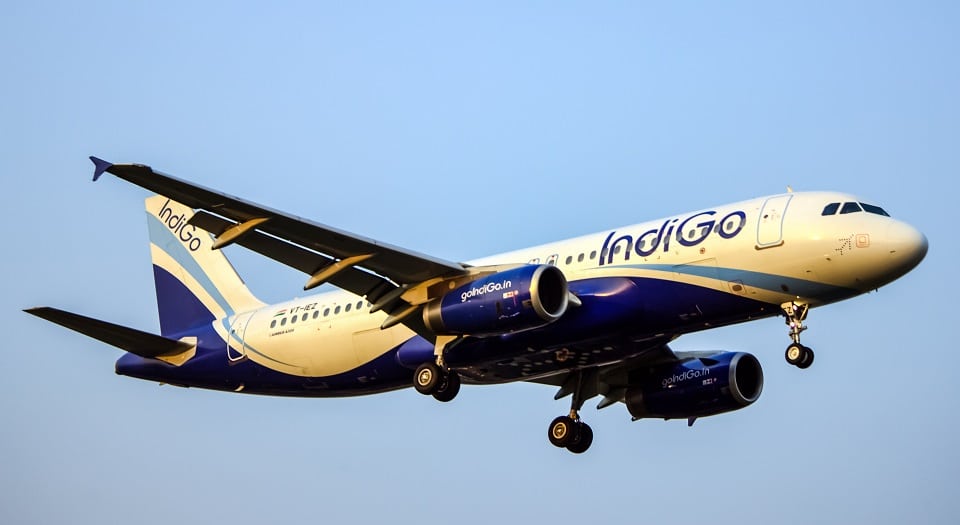Airlines
IndiGo announces new codeshare route to Casablanca, Morocco, via Istanbul

IndiGo, India’s largest airline, has announced additional codeshare flights to Casablanca, Morocco, through Istanbul, beginning July 24, 2023. With the addition of this route, IndiGo’s network of codeshare destinations with Turkish Airlines now includes 38 cities outside of Istanbul. This connection to Casablanca will provide travelers with more flight options and convenience of access, in line with IndiGo’s goal of increasing international connections.
Three new A380 destinations, three continents, one day(Opens in a new browser tab)
IndiGo’s ambitious African expansion continues with the introduction of codeshare services to Casablanca, Morocco, and an upcoming direct trip to Nairobi. This strategic step underscores IndiGo’s commitment to providing seamless connectivity and expanded flying options for its passengers in response to the increasing demand for travel to Africa. With a growing interest in seeing this continent’s unique and dynamic landscapes, IndiGo is positioned to become a key participant in the African aviation sector.
Casablanca is Morocco’s economic centre and home to the largest port in Africa, the Port of Casablanca. It is a convenient gateway for the import and export of goods and services from the country. For business visitors and event planners looking for an appealing, bright, and exciting venue, the city has a little bit of everything.
Etihad Airways enhances interline and codeshare with six airlines(Opens in a new browser tab)
The busy metropolis attracts both explorers and business travelers, with its distinctive blend of modern elegance and traditional African charm. Hassan II Mosque, Morocco Mall, Eglise Notre Dame De Lourdes, Medina Market, Arab League Park, Beth-El Temple, Tamaris Aquaparc, and other prominent tourist sites can be found in the city.


Airlines
Air India Rolls Out A350s for Delhi-New York JFK and Newark Routes

In a major development for North American travelers, Air India has announced the deployment of its state-of-the-art Airbus A350-900 aircraft on two key routes: Delhi to New York and Delhi to Newark.
The service on the Delhi-New York route will commence on November 1, 2024, while the Delhi-Newark route will see its inaugural flight on January 2, 2025.
The introduction of the air india a350 will bring significant enhancements to Air India’s offerings, particularly with the launch of its Premium Economy class. air india retrofit This new class will feature 24 wide seats arranged in a 2-4-2 configuration, providing passengers with extra legroom and a more comfortable flying experience.
Soon, Air India aircraft will feature onboard WiFi & all-new cabins: Click here
“We are encouraged by the positive guest feedback we have received from the domestic deployment of our air india a350 interior to offer our hero product on the Delhi-New York JFK and Delhi-Newark routes. This is a significant leap forward for our U.S. operations that also underscores our commitment to continuous improvement,” said Campbell Wilson, Chief Executive Officer & Managing Director of Air India.
The A350’s Business class will set new standards with 28 private suites, each equipped with full-flat beds, direct aisle access, and personal wardrobes. Economy class will be configured to accommodate 264 passengers in a 3-4-3 layout. Across all cabins, passengers will enjoy the latest Panasonic eX3 in-flight entertainment system, offering over 2,200 hours of content.
Air India’s First A350-900: Interior, Routes, &Inflight Features: Click here
This strategic deployment marks a notable enhancement in Air India’s U.S. operations, with 60% of its flights to the U.S. now featuring new or upgraded cabin interiors. The air india new international routes currently operates 51 weekly flights to five U.S. destinations: New York JFK, Newark, Washington DC, Chicago, and San Francisco.
The revamped cabins, advanced in-flight entertainment systems, and improved service standards represent air india wifi commitment to providing a superior travel experience. “We believe this enhanced offering will solidify Air India’s position as a leading carrier and attract travellers seeking a world-class flying experience between India and the United States,” the airline stated.
Seats on these flights are now available for booking on Air India’s website, mobile app, and through travel agents, ensuring that passengers can easily plan their journeys on these newly upgraded routes.
Air India Economy vs Qatar airways economy: which is best?:Click here
-

 Travel1 week ago
Travel1 week agoAir India to Expand US Operations with Three New Routes After a Decade
-

 Travel2 weeks ago
Travel2 weeks agoWhy We Should Avoid These Stamps in a Passport
-

 Airlines1 month ago
Airlines1 month agoInvestigations Reveal Fake Chinese Titanium in Boeing and Airbus Jets
-

 Tech4 weeks ago
Tech4 weeks agoChina’s CATL Plans 1,800-Mile Electric Plane Launch by 2027
-

 Airport3 days ago
Airport3 days agoTop 10 Largest Airports in the World by Size
-

 Aerospace4 weeks ago
Aerospace4 weeks agoChina’s Fighter Jets Turn Wings into Autonomous Drones
-

 Airlines4 days ago
Airlines4 days agoAir India Rolls Out A350s for Delhi-New York JFK and Newark Routes
-

 Defence3 weeks ago
Defence3 weeks agoBoeing Enhances Chinook with New Engines and Block II Upgrades at $96 Million







